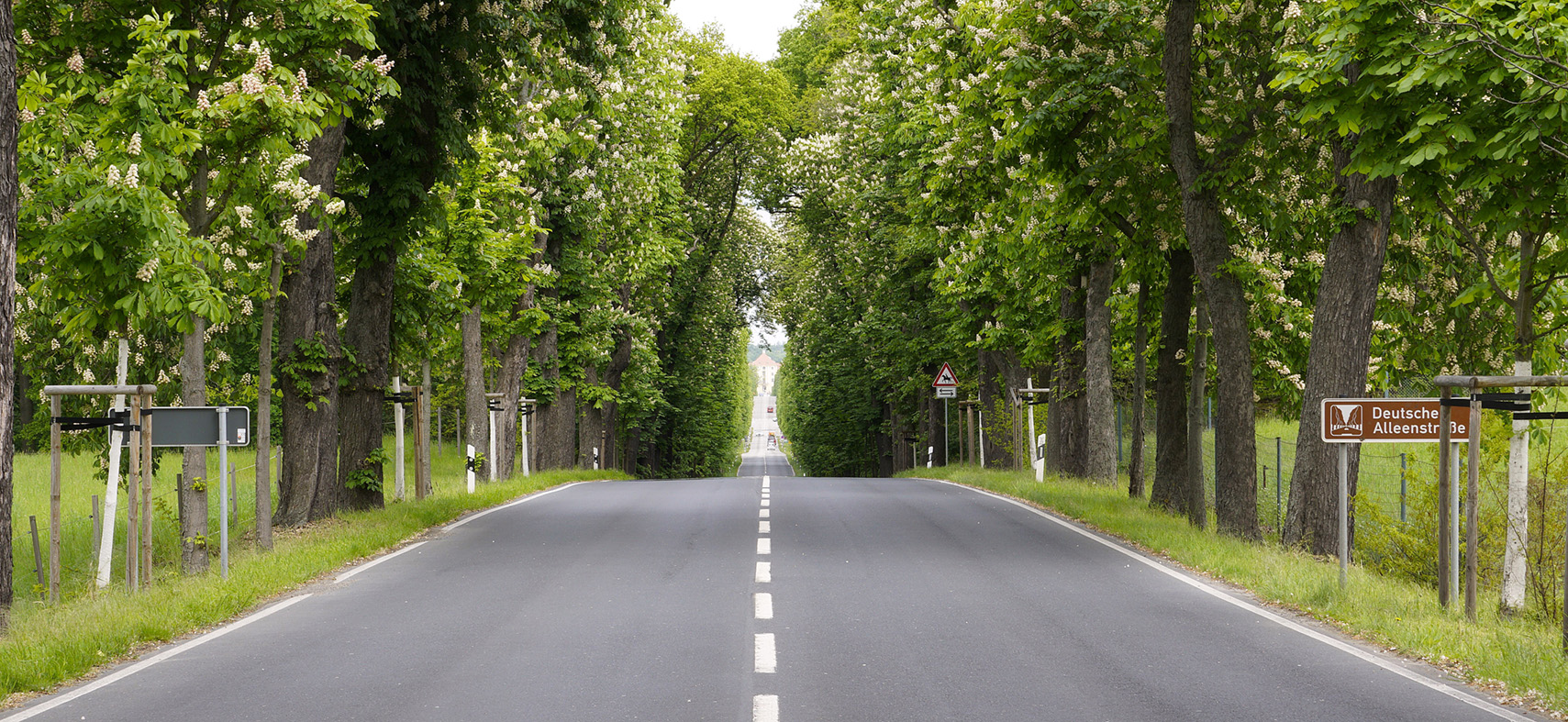 Fifty kilometers south of Paris not only the ancient seat of the French kings of Fontainebleau is located, but also the castle of – as we would say nowadays – a water and forest minister from the 16th century. It was Cosme Clausse, who commenced to engage in landscape gardening from 1548 onwards and in a first phase began to build a water garden for his small park in Courances.
Fifty kilometers south of Paris not only the ancient seat of the French kings of Fontainebleau is located, but also the castle of – as we would say nowadays – a water and forest minister from the 16th century. It was Cosme Clausse, who commenced to engage in landscape gardening from 1548 onwards and in a first phase began to build a water garden for his small park in Courances.  It astonishes that already in his time an important element of the gardens by Andre Le Notre (1613-1700) has its origin: the Grand Canal. Here in Courances it has a length of 600 meters. It does not have an architectonic connection to the castle, yet. A further trapezoidal basin with 14 sandstone gargoyle monsters, the Salle d’Eau, also goes back to this time. Having undergone various changes and transformation this basin presents itself today with a 6700 square meter big water surface.
It astonishes that already in his time an important element of the gardens by Andre Le Notre (1613-1700) has its origin: the Grand Canal. Here in Courances it has a length of 600 meters. It does not have an architectonic connection to the castle, yet. A further trapezoidal basin with 14 sandstone gargoyle monsters, the Salle d’Eau, also goes back to this time. Having undergone various changes and transformation this basin presents itself today with a 6700 square meter big water surface.
The second phase of the garden is connected to the building of the actual castle from 1622 onwards. Further water elements were added and the areas for agricultural grounds, parks and gardens were expanded. For many castles and parks the overestimation of own economic opportunities by the owners was regularly linked to transformation and reshaping phases, but also often ended in the change of ownership. Courances, too, gives evidence that „castles in the air“ were not only built within the era of the New Economy in the 21st century. A sideline of the Gallard family had to buy Courances in 1677 at an auction of the creditors in order to keep the castle within the family. This period also presents the third design phase of the garden. A symmetric mirror basin in the castle axis dates back to this time. But Andre Le Notre, the famous French garden designer, was not involved in any developments of this garden.
A transformation of the Salle d’Eau into an Ornamental Lake presents evidence of English influences in design since 1768. On the other hand, traditional parkways were maintained and along the entrance promenade trees were newly replanted in 1782. A solitary and unclipped plane-tree in the park with about 5,50m trunk circumference can also be traced back to this phase.
With the purchase of the property by the financier Samuel de Haber in 1872 began the fifth development phase of the garden grounds. The influences of the Mixed Style left their marks in the park over two generations with the addition of another Basin Dauphin and an English-influenced Japanese Garden in 1908. The latter shows parallels to the Garden of the English Tatton Park in terms of the choice of plants. The landscape architects Édouard André, Henri and Achille Duchêne were involved in this phase.
development phase of the garden grounds. The influences of the Mixed Style left their marks in the park over two generations with the addition of another Basin Dauphin and an English-influenced Japanese Garden in 1908. The latter shows parallels to the Garden of the English Tatton Park in terms of the choice of plants. The landscape architects Édouard André, Henri and Achille Duchêne were involved in this phase.
The occupation and military use of the park in the Second World War was the starting point of the current development phase of the garden. The dismantling of this impairment in the park and also the embellishments and changes at the building from the late 19th century  mark the works in the 1950s and 1960s under the Family de Ganay. Only recently a romantic detail, a „love nest“ in form of an Isle-Pavilion surrounded by water and gargoyles, was restored. Further sensitization regarding the management and detailed historical reappraisal over the past years characterize this multi-layered water garden from Renaissance times – a garden that offers very romantic traits which are rather atypical for French parks.
mark the works in the 1950s and 1960s under the Family de Ganay. Only recently a romantic detail, a „love nest“ in form of an Isle-Pavilion surrounded by water and gargoyles, was restored. Further sensitization regarding the management and detailed historical reappraisal over the past years characterize this multi-layered water garden from Renaissance times – a garden that offers very romantic traits which are rather atypical for French parks.
[wp_mapbox_gl_js map_id=”1037″]
